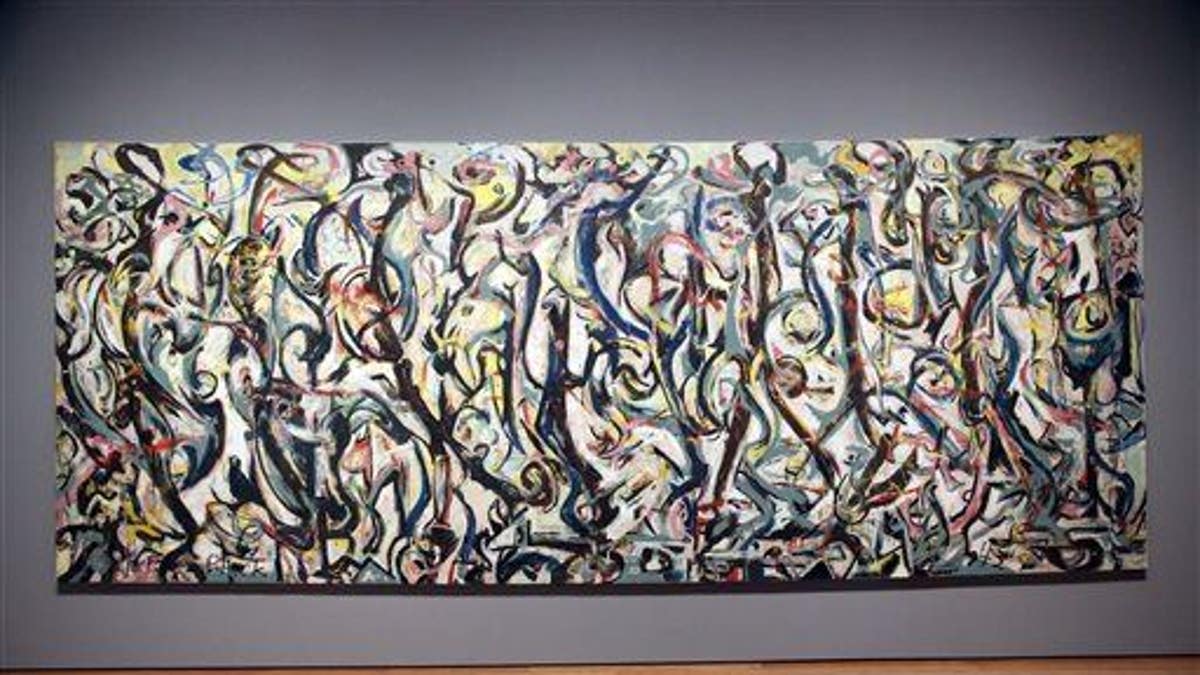
Jackson Pollock's ���Mural,��� 1943, as installed at the J. Paul Getty Museum in Los Angeles on Monday, March 10, 2014. (AP Photo/Nick Ut)
How do you tell whether a canvas splattered with paint is the work of Jackson Pollock—or a fake? Collectors have been tricked in the past, but a new computer program could prevent such misfortune, the Smithsonian reports.
The software, created by a researcher at Lawrence Technological University, was at first intended to examine medical images, Ars Technica reports. It looks at the paintings from a numerical perspective, making minute examinations that the human eye can't handle, according to a post at Eureka Alert.
Once a painting is scanned, the program examines texture, color, shapes, and more. It picks up on 4,024 different numerical attributes of the painting—things like the way dripping paint creates fractals, the press release notes.
It's 93% accurate, and anyone can use it: You can download the program right here. What's more, it would seem to prove that even if Pollock's art looks easy to copy, it's actually done in a specialized style, the Smithsonian notes.
(Scientific techniques, however, can help to recreate it.)
This article originally appeared on Newser: Fake Jackson Pollock? Software Lets You Know
More From Newser
